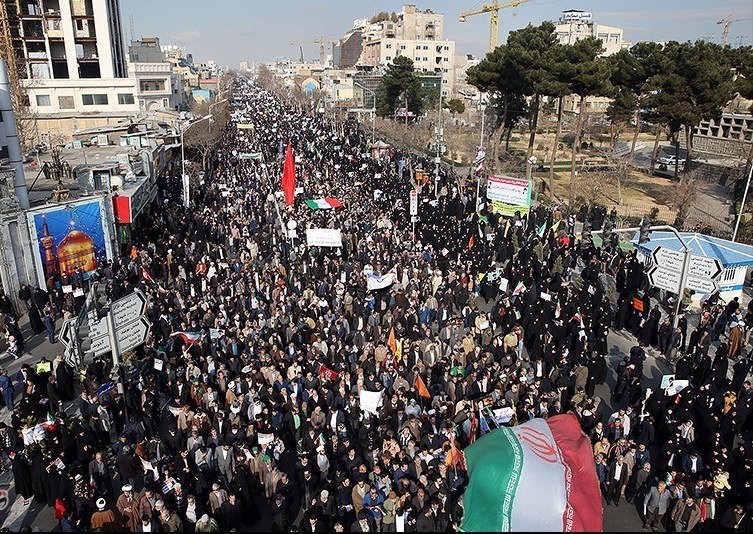Recent elections and the shock arrival of the coronavirus in Iran have brought the country once more into the spotlight. I spoke with Iranian scholars and experts at De Balie recently who were equally divided on what the future holds for this ancient and beleaguered Middle Eastern power.
In recent years, Iran has made headlines with international sanctions regarding its development of a nuclear capability. In November last year widespread protests fuelled by exponential hikes in fuel prices were followed by the assassination of top Iranian commander Qasem Soleimani by US forces in Iraq. A retaliatory attack by Iranian forces resulted in the downing of a passenger plane in which over 100 Iranians were killed. More protests followed. It is estimated that over 1500 Iranians have been killed by government clamp downs since November. With record low turnout at last week’s elections and a rising coronavirus death rate, Iran’s Islamic Republic is coming under increasing pressure.
Described by many as ‘the least competitive election in years’ in Iran, over 7000 of the 15 000 candidates who applied to run in the 2020 elections were disqualified by the Guardian Council. This is a 12-person board of experts in constitutional and Islamic law largely appointed by Supreme Leader Ayatollah Ali Khamenei. A survey of 140 000 people carried out earlier this month by Iranian state television indicated that 83% of participants would boycott the election.
‘Iran is surrounded by evil disasters’ – Monsoureh Shojall
There is a deep sense of despair among Iranians. Long-time women’s rights activist, Monsoureh Shojall explains, ‘Iran is surrounded by evil disasters’. Certainly much has changed since the 2016 national elections. They promised hope of reform from within the Islamic government and a move toward a more open, prosperous economy. The 2015 Iranian nuclear deal had just been signed and the resulting lifting of sanctions paved the way for growth predictions of up to 6%. Voter turnout was reported to be 62%.
However the US has since pulled out of the nuclear deal (2018) and re-implemented a raft of sanctions against Iran. This, combined with high levels of corruption and mismanagement within the country, has resulted in soaring levels of unemployment and inflation. The IMF estimated a 9.5% contraction of Iran’s economy in 2019. Under these circumstances it is perhaps understandable that Shojall SAYS describes ‘negativity is a national trauma’ in Iran. However opinions on the country’s future are divided.
‘Iranian society is on a quest for democracy’ – Shervin Nekuee.
Some see the following months as the breaking point for Iran’s Islamic regime. It has struggled for over 40 years to maintain control. But for Iranian sociologist and writer, Shervin Nekuee, ‘Iranian society is on a quest for democracy’. He describes the current time as ‘a dark moment on an inspiring quest’. Iranian academic and research fellow, Damon Golriz, is even more hopeful of change. He argues that since December 2017 the country has ‘changed radically’. An era of dichotomy or bi-polar division has begun he explains, which involves 80% of Iranians under 40 demanding a complete change. ‘They want something totally new, a different life.’
Shervin Nekuee takes a long-term historical perspective in order to explain the current situation. His narrative begins in 1953, the year of the coup d’état in which the CIA allegedly took a hand via Operation Ajax. In the climate of the Cold War, the rise of the Communist Party in Iran was viewed with suspicion by the United States. Fast forward to 1977 when Jimmy Carter describes Iran as ‘America’s island of stability’ in the Middle East. Only to find that two years later, the Islamic Revolution successfully dispelled any such notions. The American hostage crisis in the same year, lasting for an incredible 444 days, compounds the growing tensions between the US and Iran. So too, does the Iran / Iraq war in which America supports Saddam Hussein. Trump’s recent withdrawal from the Iranian nuclear deal and the assassination of a member of the Iranian government is further evidence of failing Iran US relations.
‘Trump is more popular in Iran than in Europe’ – Damon Golriz
But there are others who interpret events differently. Damon Golriz argues that the removal of Soleimani has ‘opened the doors for negotiation between Iran and the US as well as Iran and Saudi Arabia’. Generally acknowledged as the second most powerful man in Iran after the Ayatollah Khamenei and labelled a terrorist by the US, Golriz argues that Soleimani stood in the way of any serious structural reforms in Iran. Research Fellow in International Peace, Justice and Security group in the Hague, Golriz told me he has twitter accounts in Persian and in English. He sees that in Iran, Trump is far more popular than in Europe. For the simple reason that ‘they understand politics while the Europeans focus on his morality’.
The future of course is difficult to foresee. As our Iranian host, Bahram Sadeghi, tells us with typical irony, ‘My father always said, “Bahram, the worst is yet to come”’. In the case of Iran, this may, sadly be true. But Damon Golriz is positive about the strong and growing desire for change among the younger generation in Iran. He is also more positive about the shift in power dynamics that have occurred in the Middle East recently. Even skeptics like University of Amsterdam Senior lecturer, Paul Aarts, agree that with a Republican government likely to remain in place in the US, the Islamic regime may be forced to agree to a deal that even moderates will accept. This is simply because Trump has shown he is willing to put his money where his mouth is, for better and for worse.

